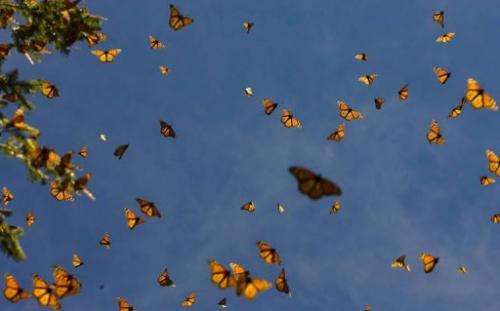European grassland butterflies in decline

More than half of Europe's main species of grassland butterflies are in sharp decline as a result of habitat loss, the European Environment Agency (EAA) warned on Tuesday.
"Butterfly populations have declined by almost 50 percent, indicating a dramatic loss of grassland biodiversity," it said.
Out of 17 species monitored in 19 countries from 1990 to 2011, eight shrank in population, two remained stable and one increased. The trend was uncertain for the other six, the EAA said.
The report blames intensified agriculture, where monoculture of cereals and pesticides are destructive for biodiversity.
But it also points the finger at the abandonment of meadowland in mountains and marshy regions, especially in eastern and southern Europe. These lands become swiftly overgrown by scrub and woodland, sidelining the plants on which the butterflies depend.
Butterflies are a bellwether of environmental health, as they play a key role in pollination.
"The dramatic decline in grassland butterflies should ring alarm bells," said Hans Bruyninckx, the Copenhagen-based agency's executive director.
"In general, Europe's grassland habitats are shrinking. If we fail to maintain these habitats, we could lose many of these species forever."
The 17 species, counted by volunteers, comprised seven "widespread" species such as the Large Skipper (Ochlodes sylvanus), which is found around Europe, and 10 "specialist" species, such as the Dusky Large Blue (Phengaris nausithous), which is found in cooler regions where there is a food plant called the great burnet.
© 2013 AFP
















